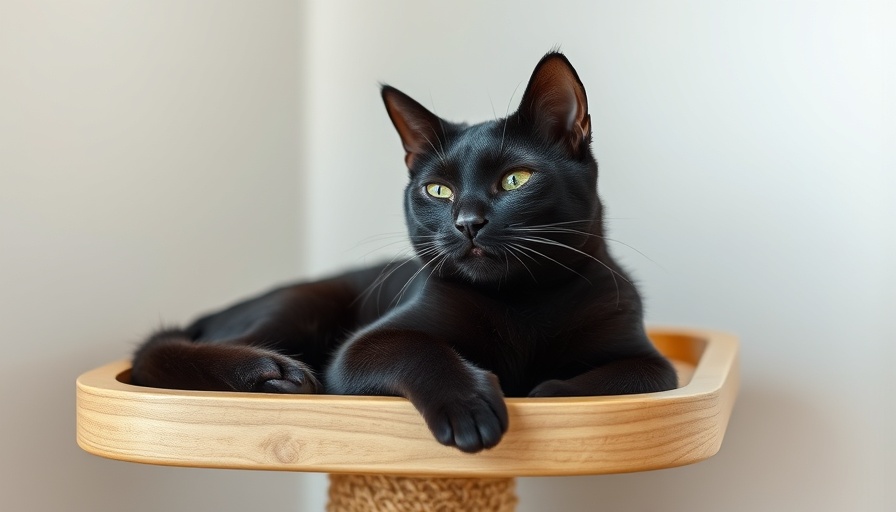
The Ultimate Guide to Creating a DIY Cat Tree for Your Feline Friend
Building a DIY cat tree is not only a fun and budget-friendly endeavor; it’s an integral part of creating an engaging home for your beloved pet. In recent years, cat ownership has skyrocketed in urban settings, elevating the need for specialized pieces of furniture that cater to our furry companions. A well-constructed cat tree not only provides a sense of security and ownership for your pet but also encourages physical activity and mental exercises, enhancing their overall happiness and well-being.
Understanding Cat Behavior: Designing the Perfect Tree
Before embarking on your cat tree project, it’s essential to understand what features will benefit your feline the most. As natural climbers, cats crave vertical space. They enjoy perches that allow them to survey their environment and prefer areas that offer them the opportunity to scratch—it's in their nature. To accommodate these instincts, consider designs that include:
- High platforms: Cats love to get up high to feel secure.
- Hiding spots: Provide cozy corners for them to retreat and feel safe.
- Climbing components: Ramps, steps, or multi-tier designs can provide the engagement they seek.
Exploring Types of Cat Trees
When considering the type of cat tree to build, think about your cat's habits and your home’s aesthetics:
1. Basic Scratching Post
For cats that primarily need a scratching surface, a simple scratching post is more than sufficient. These are easy to make and perfect for compact spaces.
2. Multi-Level Tower
A multi-level tower is ideal for active households with several cats. These structures can feature various platforms and scratching surfaces, catering to their instinct to jump and explore.
3. Wall-Mounted Shelves
If space is at a premium in your home, consider wall-mounted shelves. This design not only saves floor space but also provides an elevated space for cats to explore.
4. Modular Systems
These systems are perfect for those who want flexibility. As your kitten grows, so too can the configurations of their cat tree.
Gathering Materials for Your Cat Tree
Now that you understand the basic types of cat trees and what features appeal to your feline friend, it’s time to gather materials. Common supplies include:
- Wood: Plywood or untreated wood is ideal for structure.
- Sisal rope: Perfect for scratching surfaces.
- Carpet remnants: For comfort and grip.
- Glue and nails: To secure all components firmly.
- Paint or varnish: For a finished look that's also pet-safe.
Quality materials are essential to ensure the longevity and safety of your cat tree. Avoid treated woods or paints that could be harmful to pets.
Step-by-Step Instructions to Build Your DIY Cat Tree
To make your cat tree, follow these simple steps:
- Design your tree: Sketch out your design considering height and features.
- Cut your wood: Measure twice, cut once, to ensure accuracy.
- Assemble the base: Create a sturdy base that can support climbing and jumping.
- Add platforms and scratching areas: Securely fasten all pieces together.
- Finish and decorate: Make it visually appealing and safe for your cat.
Your final product should not only serve your cat's needs but also fit nicely within your home's decor.
The Cost-Effectiveness of DIY Cat Trees
In contrast to commercially available cat trees that can often be pricey, building your own DIY cat tree can save you a significant amount of money. Plus, you gain the ability to customize it precisely to fit your home and your cat’s personality. As the real estate market continues to shift and shape our living spaces, having a cat tree that works within those contexts becomes more valuable than ever.
Incorporating Cat Trees into Real Estate Conversations
For real estate professionals, understanding the value of pet-friendly home features is compelling in today’s market. Properties that cater to pet owners often have a competitive edge, whether through additional amenities like cat trees or pet-friendly spaces. When discussing homes for sale or properties to rent, highlighting features that accommodate pets becomes an essential part of showcasing homes.
Conclusion: Building Connections through DIY Projects
In a world where pet ownership is increasingly integral to our lives, building a DIY cat tree is a rewarding way to bond with your pet while enhancing your home. Not only does it enrich your cat's environment, but it also positions you as a thoughtful pet owner in the eyes of potential real estate clients. Remember, investing in our furry friends’ happiness is always a worthwhile venture.
 Add Row
Add Row  Add
Add 




Write A Comment